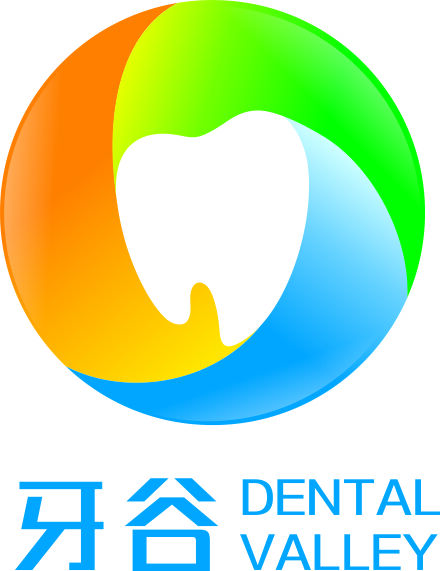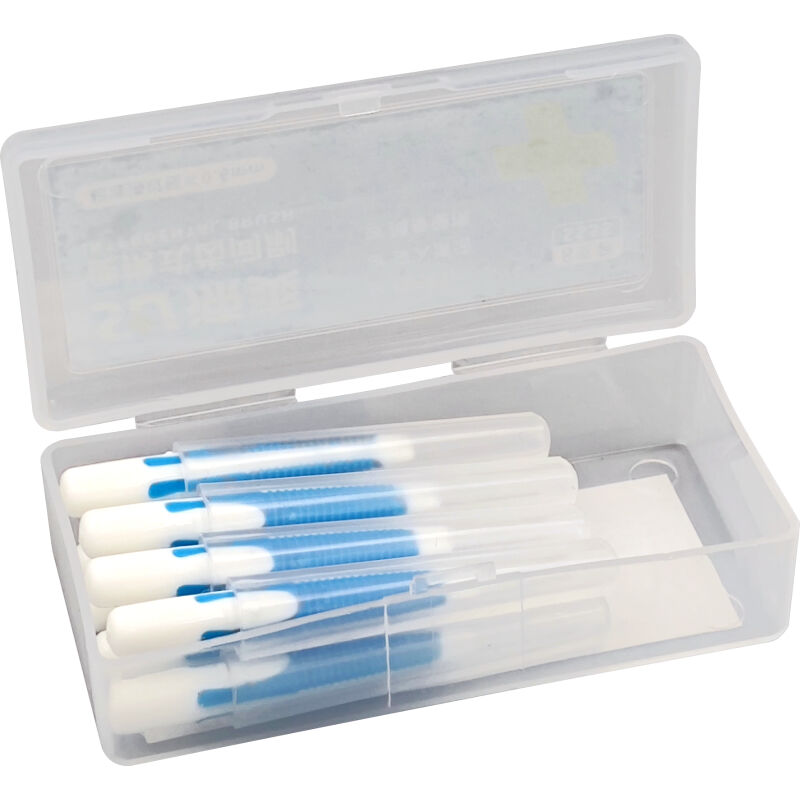Essential Dental Cleaning Tools for Plaque Prevention
Ultrasonic Scalers: Efficiency and Patient Comfort
Dental offices are increasingly turning to ultrasonic scalers these days because they work so much better at removing plaque and tartar thanks to those high frequency vibrations. Compared to old school hand scaling, these devices get rid of stubborn deposits way faster while dentists move around the mouth. Many patients actually find the procedure more comfortable since the vibrations aren't harsh like scraping metal against teeth, and sometimes folks don't even need numbing shots anymore. Research from several clinics indicates that besides cutting down on bad bacteria in the gums, regular use of these tools seems to lead to healthier mouths overall. From what dentists report, handling is straightforward which means cleaner teeth in less time. Appointments tend to wrap up quicker too, leaving both dentist and patient satisfied with results.
Air Polishers: Gentle Enamel Stain Removal
Air polishers work really well at getting rid of those pesky surface stains on teeth by mixing compressed air, water, and a special fine powder. Compared to older techniques, they're much gentler on enamel because they don't scratch or wear down the tooth surfaces during cleaning. Most dentists notice patients tend to be happier after air polishing treatments, something backed up by plenty of clinic feedback over the years. For regular checkups, many dental offices now include air polishing as part of their standard cleaning routine since it tackles both plaque accumulation and stubborn stains without compromising the look of natural teeth. Some clinics even offer this service separately for people who want extra brightening between regular cleanings.
Interdental Brushes for Comprehensive Cleaning
Interdental brushes were made specifically for getting into those tight spots between teeth where normal toothbrushes just can't go, offering something extra when it comes to keeping mouths clean. They do a pretty good job at stopping plaque from building up over time and actually help keep gums healthier too. Some studies back this up showing that these little brushes work better against plaque compared to regular old flossing techniques most people stick with. When someone wants to start using them regularly though, picking out the correct size matters quite a bit. Too big and they won't fit properly, too small and they won't do much good either. Finding what works best often takes some trial and error but definitely pays off in the long run for both teeth and gums.
How Modern Tools Combat Periodontal Disease
Subgingival Cleaning with Micro-Nozzle Tips
The latest micro nozzle tips are changing the game when it comes to cleaning beneath the gums, something really important for fighting off periodontal issues. What makes them special is their ability to send streams of water or antiseptic right into those hard to reach periodontal pockets where plaque builds up. Dentists report seeing real results from patients who get treated with these tools since they clean away stubborn biofilms and bacteria that regular methods miss. Research indicates these tiny nozzles cut down on harmful bacteria levels quite substantially while avoiding the need for surgery or other aggressive treatments. Many practitioners in the field have noticed better results overall when using this tech instead of older approaches. Patients seem happier too because there's less discomfort involved during procedures. For anyone dealing with gum problems, this represents a major step forward in making treatment both gentler and more successful long term.
Laser-Assisted Bacterial Reduction Techniques
Lasers in dentistry provide a really accurate way to get rid of bacteria and clean out infected areas. These devices shoot focused light beams at problem spots, killing germs without hurting surrounding healthy tissue too much. Studies over recent years show that when dentists use lasers for cleaning, they actually see improvements in gum pockets getting smaller and fewer bacteria hanging around in those hard to reach places. Patients who've had this treatment report feeling better quicker than after traditional methods because their mouths don't suffer as much damage during the process. Many dental professionals now recommend including laser treatments as part of regular checkups for better overall oral health. With both good results and less discomfort for folks sitting in the chair, it's no wonder why lasers are becoming increasingly popular among modern dental offices across the country.
Precision Instrumentation for Minimally Invasive Care
Digital Cavity Detection Systems
Digital cavity detection systems are changing the game in preventive dentistry because they spot cavities much earlier than regular eye exams. Traditional methods rely on what dentists can see with the naked eye, while these new systems use advanced tech like infrared light to find those tiny early signs of decay nobody else would catch until it gets bad. Catching problems early means saving more of the actual tooth structure since dentists can step in sooner rather than waiting for bigger issues that require drilling or fillings. Research indicates these digital tools find cavities at a much higher rate than old school techniques did back in the day. The numbers definitely support why dental offices should consider investing in this equipment instead of sticking with outdated approaches. Plus, patients actually get to see what's going on in their mouths through images from these systems. Seeing is believing when it comes to understanding why brushing and flossing matters so much for preventing future dental troubles.
Ergonomic Designs for Accessible Root Planing
When it comes to dental instruments, good ergonomic design really makes a difference for dentists working on root planing. Tools with those clever angled handles and lighter weight materials help reduce hand and wrist fatigue during long procedures. Dentists find they can work better when their tools don't strain their muscles so much. There's actually research showing that dental professionals suffer from repetitive strain injuries at pretty high rates, so this isn't just about comfort. The better ergonomics means dentists get through their work faster too. Patients notice the difference as well. With less strain on the dentist, procedures tend to be smoother and more precise, causing less discomfort for everyone involved. At the end of the day, these ergonomically designed tools serve two main purposes they protect dental professionals from injury while making the whole treatment experience better for patients.
Clinical Hygiene Standards and Tool Sterilization
Autoclave Protocols for Cross-Contamination Prevention
In dental clinics across the country, autoclaves play a vital role keeping everything clean and sterile so patients don't get sick from reused tools. Basically what happens inside these machines is they blast away germs with superheated steam under pressure, killing off all sorts of nasties including bacteria, various viruses, and even stubborn fungi. Most dentists follow pretty strict rules when running them though. First things first, instruments need proper cleaning before going into the machine. Then there's picking the right cycle settings based on what kind of materials we're dealing with. And let's not forget regular checks using those biological indicator strips that tell us if the whole process actually worked as intended. Looking at actual numbers makes it clear why this matters so much. Practices that stick closely to proper sterilization procedures report way fewer infections than ones where shortcuts happen occasionally. Both the Centers for Disease Control and the American Dental Association have put together detailed manuals about how to handle sterilization correctly, stressing just how critical these steps are for both hygiene maintenance and ultimately protecting people who come in for treatment.
Single-Use Disposable Tool Adoption Trends
Dental offices across the country are increasingly turning to single-use disposable instruments as part of their commitment to better hygiene and keeping patients safe. When a tool gets thrown away after just one patient, there's basically zero chance of spreading infections from person to person. Practices find this approach actually makes things run smoother since they don't have to spend time sterilizing all those little gadgets anymore. Plus, most people walking through the door these days want to know their dentist takes sanitation seriously. Research shows around 80% of patients would rather see someone using disposables because they just feel cleaner somehow. Of course, there are downsides too. The trash bins fill up faster and the monthly expenses go way up compared to reusable equipment. Still, dentists report fewer infection concerns and stronger relationships with nervous patients who appreciate the extra precaution, so many keep making the switch despite the added cost and environmental impact.

Future Innovations in Dental Cleaning Technology
AI-Powered Plaque Mapping Sensors
The new AI driven plaque mapping tools are changing the game for regular dental cleanings because they spot and track plaque much better than traditional methods. These smart sensors give dentists instant feedback during appointments so they can tailor their cleaning approach based on what each person actually needs. We've seen clinics start using this tech where the AI picks up on plaque buildup that might otherwise go unnoticed, leading to treatments that hit the problem areas right where they are. Patients get a real advantage too since these systems show them exactly where plaque is hiding through colorful visuals on screens, making it easier to understand why certain spots need extra attention. Practices that adopt this kind of technology stand out from competitors while helping clients maintain healthier mouths overall. Plus, when patients see the before and after images, they're more likely to follow through with daily brushing and flossing routines as recommended.
Bioactive Surface Coatings for Tool Longevity
Bioactive surface coatings are changing how long dental tools last by cutting down on wear and tear over time. What makes these coatings so valuable is their ability to boost both effectiveness and cleanliness standards, which means dentists don't have to replace instruments as often. Plus, they actually make the cleaning process better too. Research looking at bioactive coatings found real improvements in how well instruments clean surfaces, making them a smart investment for many dental offices. When clinics start using these special coatings, they typically see lower expenses since there's less need for new equipment. And let's face it, fewer discarded tools means less trash going into landfills. As more patients ask for greener options without sacrificing quality, dental professionals who adopt these innovations position themselves ahead of the curve in meeting modern expectations around both environmental responsibility and budget conscious care delivery.
FAQ
What is the main benefit of using ultrasonic scalers in dental cleaning?
Ultrasonic scalers efficiently break down plaque and tartar with high-frequency vibrations, offering enhanced dental efficiency and patient comfort by reducing the need for anesthetics.
How do air polishers differ from traditional stain removal methods?
Air polishers use a combination of air, water, and fine polishing powder to gently clean teeth without damaging enamel, making them less abrasive than traditional methods.
Why are interdental brushes considered more effective than traditional flossing?
Research has shown that interdental brushes reduce plaque more effectively by reaching areas between teeth that regular toothbrushes and floss cannot, thus supporting better gum health.
What role do micro-nozzle tips play in combating periodontal disease?
Micro-nozzle tips provide deep and targeted cleaning below the gum line with precise solutions, effectively reducing biofilm and bacteria without invasive measures.
How do AI-powered plaque mapping sensors contribute to dental cleanings?
These sensors enhance dental cleanings by providing real-time data, allowing personalized cleaning plans and improving diagnostic accuracy and patient education.
Table of Contents
- Essential Dental Cleaning Tools for Plaque Prevention
- How Modern Tools Combat Periodontal Disease
- Clinical Hygiene Standards and Tool Sterilization
- Future Innovations in Dental Cleaning Technology
-
FAQ
- What is the main benefit of using ultrasonic scalers in dental cleaning?
- How do air polishers differ from traditional stain removal methods?
- Why are interdental brushes considered more effective than traditional flossing?
- What role do micro-nozzle tips play in combating periodontal disease?
- How do AI-powered plaque mapping sensors contribute to dental cleanings?

